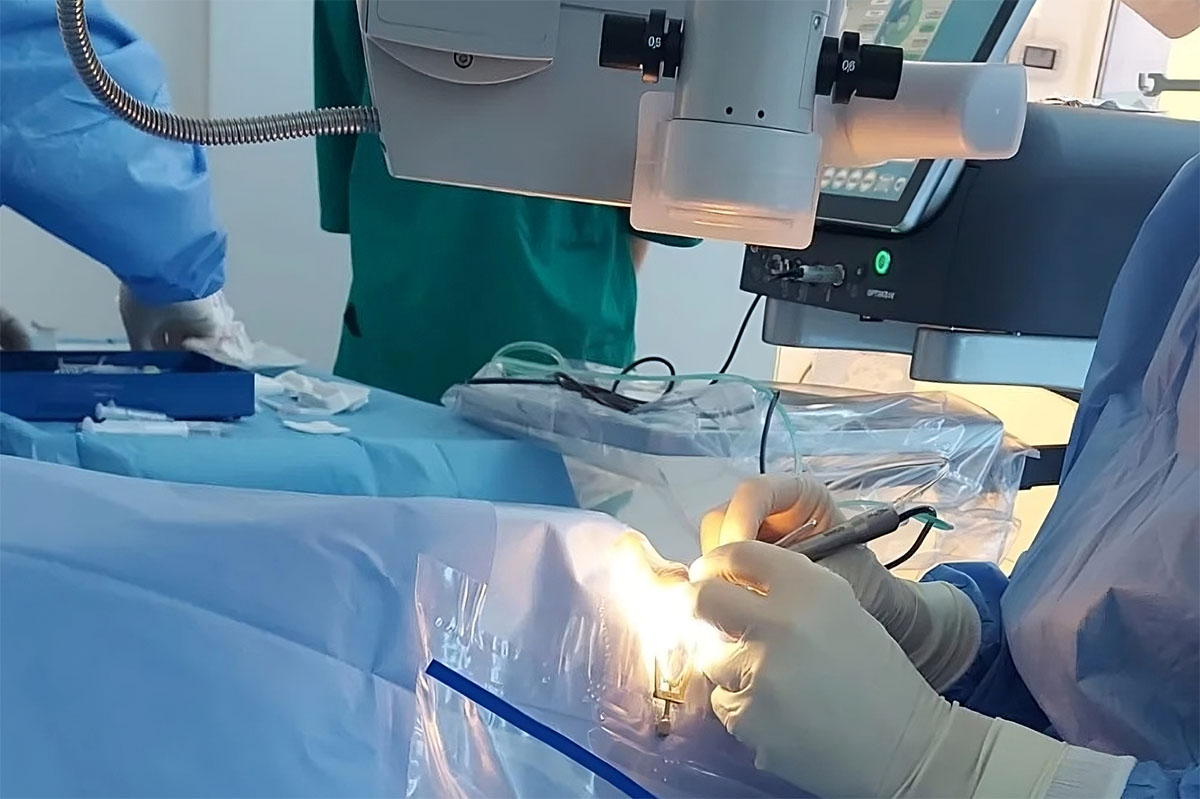-
Phone
+385 91 444 45 11 -
Email
info@poliklinika-skara-kolega.hr

Blepharoplasty is an aesthetic surgical procedure on the upper or lower eyelids. Aging leads to the sagging of eyelid skin, which, besides being an aesthetic concern, can also pose a functional problem due to the weight on the eyelids and obstruction of the visual field. The procedure involves removing excess skin and fatty tissue on the eyelids and is performed under local anesthesia.
Pterygium is a duplication or fold of the conjunctiva that grows into the cornea and covers it in the shape of a winglet. It is most commonly located in the medial part towards the nose. It occurs due to eye irritation from wind, dust, UV radiation, frequent inflammations, and dryness of the eye. Its slow growth towards the center of the cornea can cause corneal astigmatism and covering of the visual field. The surgical procedure is performed under local anesthesia.
Xanthelasma are benign accumulations of fatty tissue in the skin of the upper or lower eyelids. They represent an aesthetic and sometimes functional disturbance if their size interferes with eyelid function. The procedure is performed under local anesthesia.
Entropion is the turning in of the eyelid when eyelashes come into contact with the eyeball, causing irritation, scratching, and sores on the eye surface.
Ectropion is the turning out of the eyelid, causing tearing, redness, and dryness of the eye, with the possible formation of sores on the eye surface.
With entropion and ectropion surgery, the eyelid's edge is placed in the correct position to allow proper eyelid function.
Ptosis is a drooping upper eyelid when the eye cannot fully open spontaneously, and the eyelid covers the pupil of the eye. In addition to the aesthetic problem, ptosis also represents a functional problem as it interferes with vision.
It can be congenital or acquired as a result of injury or degenerative, age-related changes in the levator muscles of the eyelid. The operation is performed under local anesthesia.
A vitrectomy is a surgical procedure that removes the vitreous gel from the eye to treat conditions affecting the macula and retina. This surgery helps improve vision and prevent further complications, like retinal detachment or bleeding in the vitreous. It's typically done under local anesthesia, and recovery depends on the severity of the condition and how quickly the eye heals.
Stye or chalazion is inflammation of the glands in the eyelids, manifesting as a painful red bump. It has an acute painful phase and a chronic painless phase. If not healed with local therapy, surgical intervention is often required to remove the enclosed inflammatory content. The procedure is performed under local anesthesia from the inner side of the eyelid, without stitches. Returning to regular daily activities is possible the day after the procedure.
Atheroma is a benign growth resulting from the blockage of the drainage ducts of sebaceous glands. A tumor is considered any skin growth that can be benign or malignant. The removed tumor is sent for histopathological analysis (PHA), which precisely determines the type and nature of the tumor, leading to the required further therapy. PHA results are awaited for several days. Removal of viral warts by electricity (electroexcision) (removal of eyelid skin growths without stitches, after applying local anesthesia).
Electroepilation is the permanent removal of eyelashes by destroying the hair roots with electric burning. It is indicated for irregular eyelash growth, and trichiasis, where eyelashes, due to contact with the eyeball, cause discomfort and eye sores.
© Copyright 2026 Poliklinika Škara Kolega. All rights reserved. Made by ASPEKT